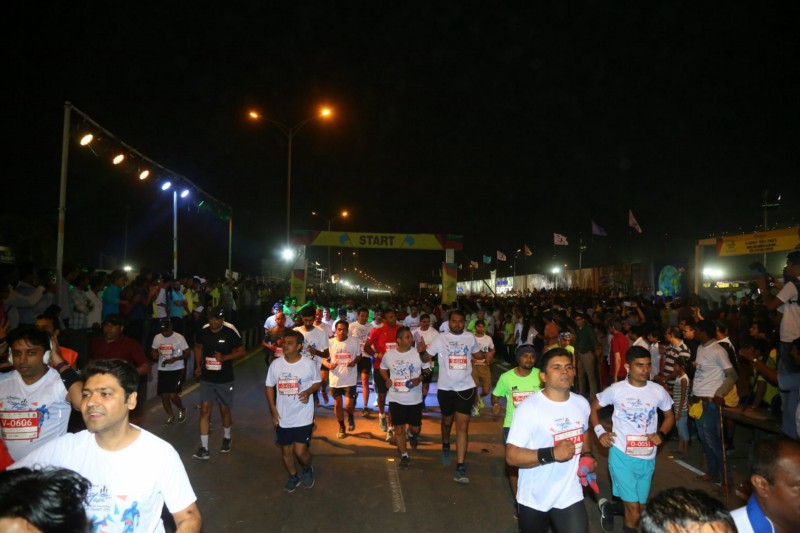How to run injury-free?
Since last some months, I have been noticing a trend where many are now graduating and maturing to a Full Marathon distance.
In past I have seen that people had first established themselves in the 21 Km category and then made an organized transition, which was gradual, where the workload was increased in a graded manner. Off late, herd mentality and the spirit of the human mind and its power have made a few of us challenge the body in a not so graded gradual manner but in sudden spurts. While there is nothing wrong in challenging the body in terms of distance or speed, if not done gradually in a graded manner, it will take a toll sooner or later. I was in a dilemma whether such a post will be construed as demotivating, but in the greater interest of people who are making the transition from 5–10k to 21k or from 21k to 42k, I am reposting this article.
A word of caution, for new and old members of the group:
Why do injuries happen?
Though I thought many times before posting this finally I feel it is time I went ahead. In the last some months there have been a spate of injuries to members old and new. The cause in most cases is TMTS (too much too soon). I feel because we are now running in a group there is a subconscious peer pressure to run more and run faster.
While there is no harm in being competitive, I feel the competition has to be restricted to bettering your own performance and not outdo your colleague.
One has to realize that the body has to get used to the new load in terms of both distance and speed. For example, it is written by most running books and guides that the mileage per week (i.e. total km run per week) should increase by 10%. So if you ran 45 km (10+ 10+ 10+ 15 on Sunday) next week it should be no more than 49. Less is OK but No more. Similarly for speed you can gradual incorporate speed workouts or tempo runs or interval runs once a week on short runs, but on Sundays when you’re running long in practice you run slightly slower than your peak speed.
In fact even on Race day, it is said that if you run 10 km at your fastest at a speed of 10 km/hr, than your 21.1 km speed goal should be not more 9.5 km per hr. That way you will finish comfortably. In trying to run fast on race day you may suffer from ITB injury. Similarly for barefoot or minimalist runners, it is very imp to run only short distances for about 6 months before moving to 15 or 20 k on barefoot.
The whole point is also that these injuries are like Diabetes. They are painless for a long time. For example, if you suddenly ramp up speed or mileage your body may not complain for 2- 3 months. But cumulative injury is persistently happening in the background. After a while you will have, mild aches or pains. But you ignore and continue and then one day there will be culmination in a severe injury.

Because of the group mentality we have also done one race too many. You have to have time to recover between races, Going back to back races (2 in 2 weeks) is also not advisable. From next season we will pick and choose events. There must be minimum 4 weeks between 2 events. Seasoned runners may do more but it will eventually lead to injury. Another common cause of injury is to go into a race with a niggle or injury, run in spite of pain in the heat of the moment and end up badly injured and as a result you stop running for a couple of months. i know the emotional feeing to run while carrying an injury is overwhelming but we have to overcome it or else suffer in the long term.
Friends we are running for ourselves and for enjoyment. Soon you will realize that it is better to participate in fewer events and run all year round then too participate in more events and have large gaps due to injury induced rest.
It is very important that we incorporate, post run stretches and muscle strengthening exercises in our schedule especially for quadriceps, hamstrings, glutes, lower back and abdominals. The importance of these cannot be overemphasized. There are exceptions to the above. Runners, who have ideal body weight, work very hard and are supremely fit. They can afford to set much stringent goals for themselves. We should first emulate them in terms of fitness before trying to reach where they are.
One more concern which people have is of joint damage. The 10 -15 most common running injuries are soft tissue injuries and not joint injuries. If one carries on running with injury sometimes stress fractures can happen -Bilateral pain or tightness after runs are generally harmless. Unilateral pain should not be taken lightly and a physio or an orthopedic surgeon should be consulted.
I have personally done all of the above mistakes and suffered badly a number of times. I am seeing the same phenomenon happening in some of you and foresee it for some more maybe.
It is better to learn from others experiences and avoid common mistakes then to learn the hard way.
Wish all of you strong legs, healthy bodies, happy contented minds and an injury free run!
– Dr. Pranav Desai
This article was originally posted on Surti Runners.
